Everything you need to know about locations in the WMS (part 2)
In a series of three blogs we discuss everything about locations in the Warehouse Management System. In the previous blog we talked about bulk and pick locations and the strategy behind replenishing pick locations. In the second part you can read about the possibilities of type of locations and the different conditions / properties of locations.
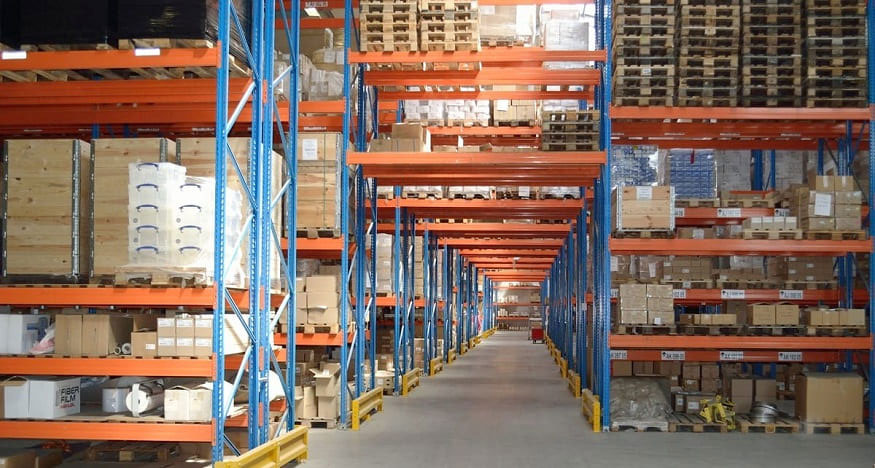
Location types
With location types it is possible to assign certain conditions on which the software acts. We know the categories ‘Administrative’ and ‘Physical’.
Administrative Location Types
The administrative location types have no fixed physical characteristics, but can differ per warehouse.
Cross dock
With the concept of cross-dock (a part of the) incoming goods leave the warehouse immediately on the basis of an existing order. The cross-dock location type therefore ensures that stock at this type of location always takes precedence at other locations when planning an order. For example, an order picker is not sent to a rack on the 4th floor, while an order can be fulfilled with (part of) the weft.
Handover Location
If a logistics operation cannot be performed in one movement, the goods can be placed at a so-called handover location. This happens, for example, in high-bay warehouses where reach trucks ‘set up’ work or when using a lift. The WMS then makes a transfer from the handover location to the final destination. This step may seem superfluous, but a WMS always wants to know where certain stock is registered. You can also register who has performed which movement in the warehouse.
Overflow
An overflow location is a location without restrictions: it cannot become full and multiple articles are allowed. This type is often used when it is not possible to calculate how many products will fit on a location, for example with a shelf or a small compartment rack.
Lost and Found
Every warehouse in a WMS has a location where missing items are booked. That is called a Lost and Found location. A product that is (temporarily) lost in the warehouse, can later be booked again from this location or definitively written off. Until then, it is physically present but not for sale.
Red Zone
If a warehouse worker is sent to a forced location to store incoming goods, a “Red Zone” is often set as an allowed fall-back. Then the warehouse employee can continue with the scan jobs and in the meantime it can be investigated why the forced location cannot be used.
Physical Location Types
The physical location types, in contrast to the administrative location types, can actually be distinguished visually. This type of location is mainly used to make the most of the warehouse.
Single racking
Shelving location with normally the capacity of 1 pallet. This location is full immediately after placement and will not be refilled. In most cases, 2 rows are attached ‘back to back’ followed by an aisle, as shown in the photo below.
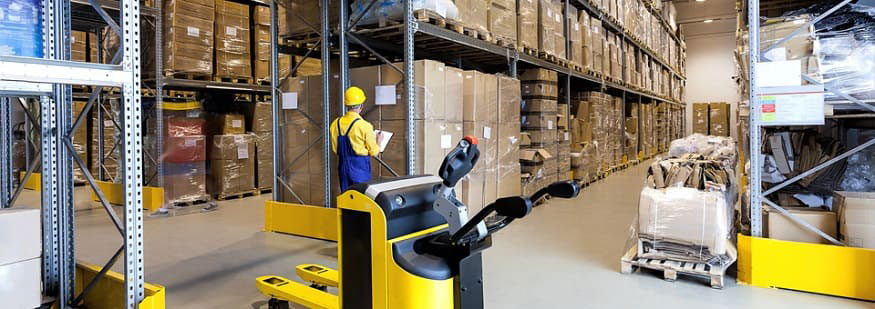
Drive in
When depth is used for a rack location, it is called a drive in location. This can be supplemented to a certain level deep. This is used when many identical pallets are stored.

Block Stacking / Floor Location
The characteristic of block stacking (or floor location) is that if stock is placed at this location, standard capacity is calculated by the WMS for exactly equal pallets. A margin is possible on, for example, imposition data.
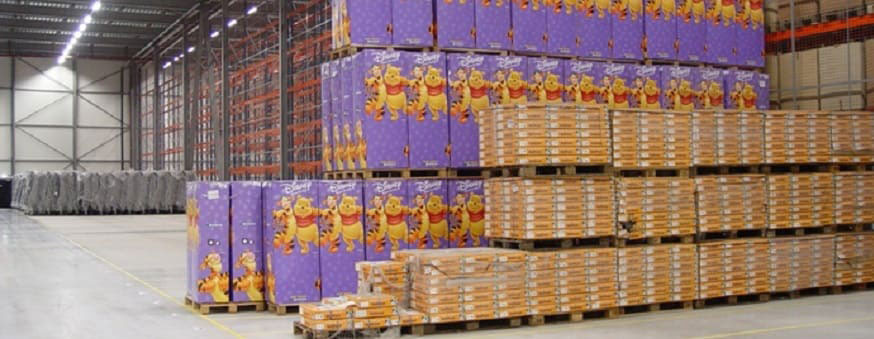
Door (dock)
Although the name suggests otherwise, this is not about an opening and closing door, but about the space behind it, also called a dock. Unloading takes place at a door and is also put away from that location. Upon removal, an order picker or forklift driver can be asked or instructed to place goods (per journey) on a door.
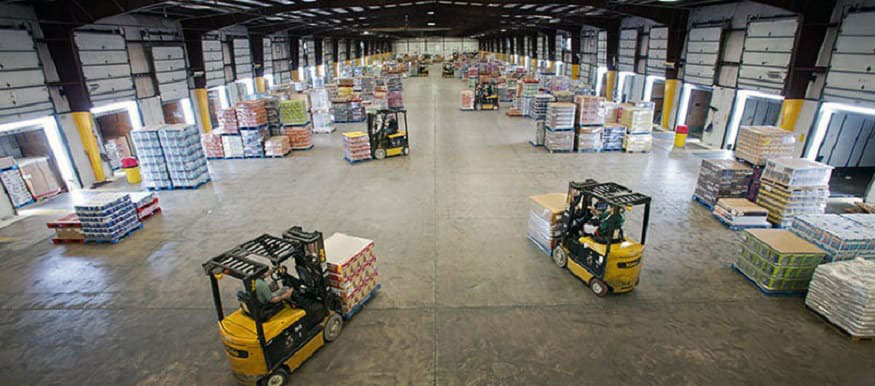
Cart / Cart Location
A cart is used for wave picking (several relatively small orders are collected in 1 walk) and fine-mesh weft (several relatively small stocks are stored on location in 1 walk). Below is an example of Kruizinga, customer of WICS and supplier of this type of pick cart. On the right the cart in use at the fair. Because a WMS always wants to know exactly where goods are, there are also locations on the cart, the cart locations.
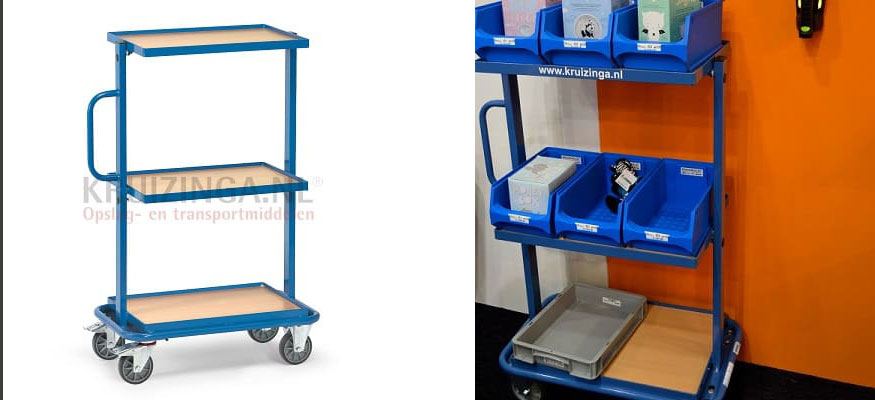
Shelf
When items with low volume are stored, shelf locations are often used. A shelf location (or small compartment location) will in principle not become “full”.
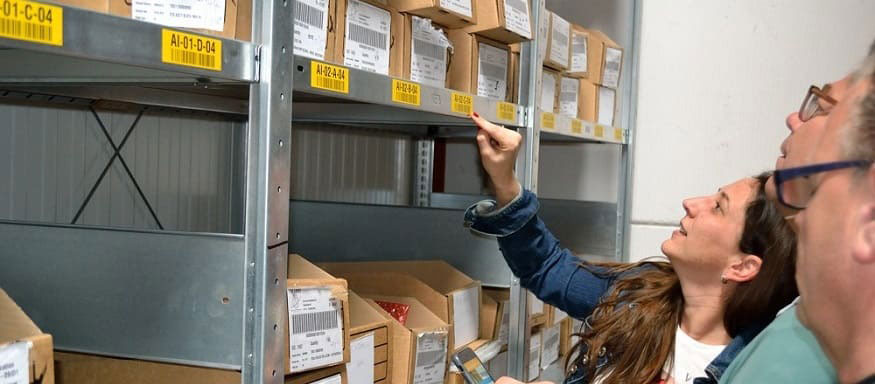
Properties of locations
The properties of a location usually include length, width and height. In addition, it is also possible to use volume (eg with big bags) or depth (double-deep storage). Sometimes a maximum weight is maintained per location.
In case of several pallets that are stored within 1 shelf, we call this the grouping unit. For example, it can be taken into account to use, for example, max. 3 block pallets on 1 shelf or 4 euro pallets on 1 shelf. This makes it possible to designate the most efficient location when entering and storing the incoming stock. Everything stands and falls with the entered article master data. You could also set a maximum per carrying weight.
Location conditions
A location can carry various conditions. For example, a location can only be used for e.g. ADR items (dangerous goods) or have a separate quarantine status, although this is usually organized at the zone level. In addition, in addition to blocking certain stock, a location can also be (temporarily) blocked. This is widely used in the refrigeration and freezing sector.
In addition, a condition such as fast mover or slow mover can be linked to a location. For example, a certain part of the warehouse can be set up as a fast mover. These locations may then, for example, only be used by a certain article group.
Need of the WMS
Setting up the different zones with associated types, properties and conditions can ensure a lot of efficiency in the warehouse. By using, for example, a door or handover location, it is always known where the articles are. It also provides insight into who was the last to move the goods. This can save a lot of research. Shelves and carts are most commonly used within B2C logistics. The shelves save a lot of space for small items, while trolleys can be used perfectly for efficient order picking and packing.
In B2B logistics with mainly pallets, good management of the double-deep storage and grouping units saves a lot of meters and space. But sometimes it is simply strict regulations around, for example, ADR or quarantine goods, which makes location management extremely important. A mature Warehouse Management System ensures that all forms of location management are possible to organize in the warehouse.
Part 3
In the last part we tell about the possibilities behind numbering locations within the Warehouse Management System. Would you like to read again what the strategy is behind dividing and especially replenishing pick and bulk locations? Click here for the first part.
Challenges in the field of location management? Contact us!<




